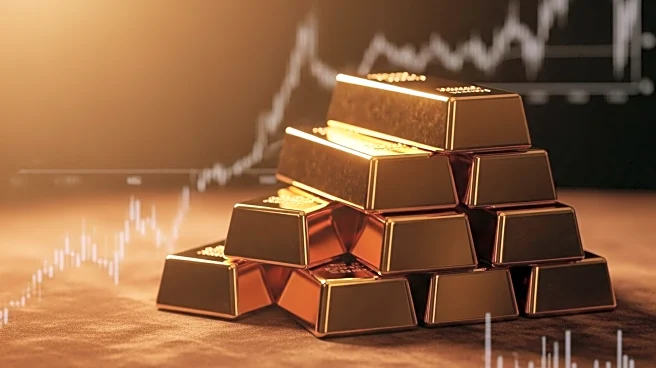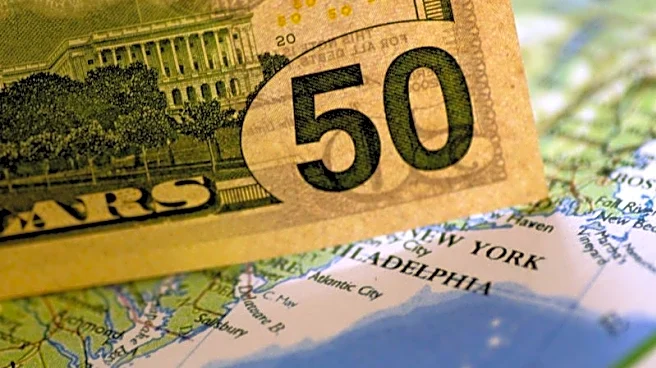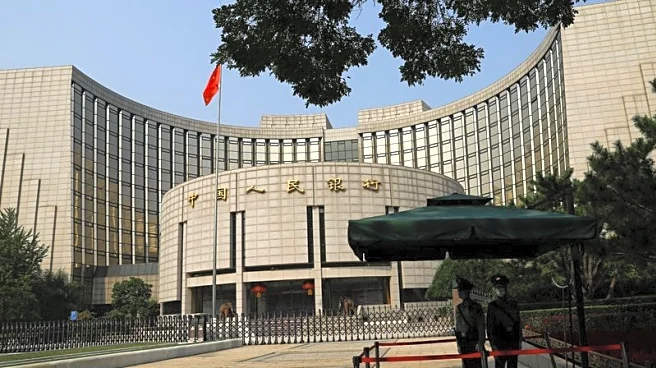What's Happening?
Gold prices have reached a new record high, driven by safe haven flows amid geopolitical uncertainty and expectations of further Federal Reserve rate cuts. Spot gold rose 0.7% to $3,771.94 per ounce, after hitting a fresh record high of $3,790.82 earlier in the session. U.S. gold futures for December delivery increased by 0.8% to $3,804.30. The benchmark 10-year Treasury yields fell 0.2%, while the U.S. dollar remained largely steady. Investors are closely watching Federal Reserve Chair Jerome Powell's comments for further cues on the central bank's policy path, with expectations of rate cuts in October and December. Strong buying interest from ETF investors, driven by rate cut expectations and geopolitical developments, is also boosting gold prices.
Why It's Important?
The surge in gold prices highlights the metal's role as a safe haven asset during times of geopolitical and economic uncertainty. The anticipation of Federal Reserve rate cuts is making gold more attractive to investors, as lower interest rates typically enhance the appeal of non-yielding assets like gold. Additionally, geopolitical tensions, such as NATO's warning to Russia, are contributing to the demand for gold. This trend reflects broader concerns about global stability and the potential impact on financial markets, influencing investment strategies and central bank policies.
What's Next?
Investors will continue to monitor Federal Reserve Chair Jerome Powell's comments for indications of future monetary policy decisions. The upcoming release of the U.S. Personal Consumption Expenditures (PCE) index, the Fed's preferred measure of inflation, will also be closely watched. Geopolitical developments, particularly involving NATO and Russia, may further influence gold prices. Central banks' actions, such as those by the People's Bank of China, could impact global gold demand and storage strategies.
Beyond the Headlines
The geopolitical tensions and economic uncertainties driving gold prices may have long-term implications for international relations and economic policies. The increased demand for gold by central banks suggests a shift towards diversifying reserves and reducing reliance on the U.S. dollar, potentially affecting global currency dynamics.











